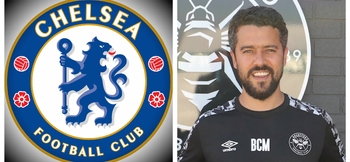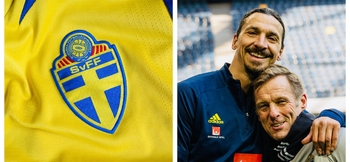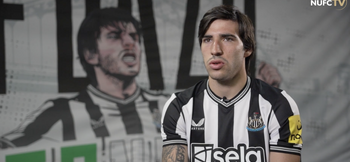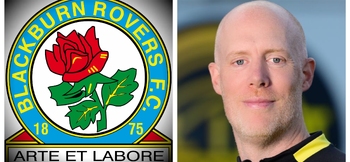Tactical changes that underpin Man Utd transformation
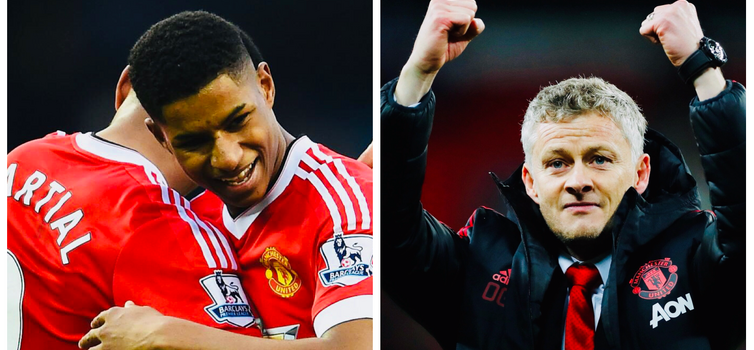
Solskjaer's system has liberated the likes of Martial and Rashford
Written by Simon Austin — March 1, 2019
MANCHESTER UNITED’S metamorphosis under Ole Gunnar Solskjaer is evidenced by some startling stats.
Since taking over on December 19th, the Norwegian has won more points in his first 10 games (26) than any other manager in the Premier League and secured eight away wins in a row for the first time in United history.
Perhaps most tellingly, his side are now just one point off the Champions League places, whereas the gap was 11 points when he arrived.
Underpinning the renaissance has been a tactical transformation masterminded by Solskjaer and his experienced assistant Mike Phelan. Whereas Jose Mourinho preferred a 4-2-3-1, with his wingers expected to track back when out of possession, Solskjaer's side have played a 4-4-2 diamond in which key attacking players have been liberated.
David Adams, who is a consultant on the MSc in Advanced Performance Football Coaching at the University of South Wales and teaches on the Pro Licence course for the Football Association of Wales, told us about these tactical changes in more depth.
“Solskjaer has had a massive impact using this shape,” Adams, who was first team coach at Middlesbrough and assistant manager at Swansea City, told TGG.
“It suits their key personnel, giving them licence to use their strengths and be more creative. He’s stuck with the shape and it’s given them consistency, getting their best players in the right positions.”
HOW THE FORWARDS HAVE BEEN LIBERATED
David Adams: A major tactical change has been the two wide forwards (usually Marcus Rashford and Anthony Martial) not having to track the opposition full-backs back.
Solskjaer has preferred to leave United’s most potent players higher up the pitch, where they can cause real damage on the transition. He's been able to do this by passing a lot of their defensive responsibilities onto the two wide players in the midfield diamond (usually Ander Herrera and Paul Pogba).
This makes it a very demanding position for each of them - much different to being in a flat midfield four - but, fortunately, Herrera and Pogba have had the athleticism and game understanding to thrive.
The clip below (v Tottenham on January 13th) illustrates what United are doing when out of posession.
When Spurs keeper Hugo Lloris has the ball, Martial goes into the space between CB and FB. He presses Toby Alderweireld, trying to force him to play into the central areas, where United are well manned.
When the ball goes outside to Kieran Trippier, defensive responsibilities pass on to Pogba, who has Jesse Lingard coming out to help. United press well, win the ball back and are suddenly on the attack.
WIDE DIAMOND TAKES UP THE SLACK
This clip is from slightly later in the game. This time Lloris goes direct to LB Ben Davies, who is near the halfway line. When the ball goes past the middle third, the responsibility of pressing the FB passes to Herrera. This means Rashford is able to stay higher up the pitch.
So Herrera goes to Davies, Nemanja Matic intercepts the pass from Christian Eriksen and suddenly United are on a threatening counter-attack.
This same defensive system has worked really well for Liverpool in the last two seasons too. Mo Salah and Sadio Mane defend in the channel between CB and FB and the wide midfielders in the three (Liverpool play a midfield three rather than United’s diamond shape) take up the defensive work after that.
COUNTER-ATTACKING THREAT
This all means that when United do win the ball back, they have their most potent attacking players available in advanced positions. In the clip below, United win the ball back in their own box against Tottenham and are able to mount a devastating counter attack.
Their forwards are high and wide in the positions vacated by Tottenham's attacking full backs and Jesse Lingard - who plays as a number 10 at the tip of the diamond - is advancing between the lines.
When Pogba passes to Martial, United are three on two. Rashford cuts inside and almost scores.
Close to half time, United launched another fast counter - and this time they scored. The move was so good that it looked as if it was on the training ground. Lingard cleverly cut off Trippier's pass and then Pogba took one touch before playing a brilliant pass out to Rashford.
The forward, who's thrived in this formation, found himself in acres of space in the channel vacated by Davies and swept home.
POGBA'S INCREASED THREAT
Paul Pogba, who became a controversial and peripheral figure under Mourinho, has been outstanding under Solskjaer. We’ve talked about his increased defensive duties in the midfield diamond, but it has also enabled him to become more of an attacking threat.
The Frenchman, who has scored nine in 14 under Solskjaer, was often behind the ball under Mourinho. Now he’s in the line ahead of Matic, who screens the centre backs. Not only is Pogba often the man launching United's counter-attacks, but he's getting into the box a lot more.
In this clip (v Bournemouth, December 30th) United have four players (Rashford, Martial, Pogba and Lingard) in the box when the ball comes in from Herrera. Pogba, coming in from the opposite side, rises to score his - and United’s - second in a 4-1 win.
WINGERS IN MOURINHO'S 4-2-3-1
This clip shows you how different the defensive shape was under Mourinho. In the 2-2 draw v Chelsea (October 20th), United were very pragmatic against Maurizio Sarri’s wide diamond. Whenever a Chelsea player rolled inside, the FB (either Ashley Young or Luke Shaw) had to come inside to take that player.
This meant the wide forward (Rashford or Martial) had to track the Chelsea full back all the way back. This often meant they were defending as part of a back six.
United did almost win the game away at a top six rival. But is it realistic for United to ask two of their best attacking players to defend so deep in so many games?
In doing that, you lose a lot on the counter-attack. When United did win the ball back, they often ended up with only Lukaku upfield, with the number 10 (Mata in this case) close to the opposition's deep-lying midfielder.
Lukaku is good to play the ball into, but often he didn’t have anyone close by. It’s difficult to get much change out of a centre back when you have no-one around you.
SETBACK AGAINST PSG
There has been one setback for Solskjaer - the 2-0 home defeat by PSG in the Champions League. The French champions kept their FBs narrow at Old Trafford, unlike a lot of other teams United have encountered in the Premier League, with Danny Alves and Angel Di Maria squeezing in in midfield. This made it difficult for United to attack the wide channels.
In the middle, Kylian Mbappe dropped back onto Matic and one of the two holding midfielders, Marquinhos and Marco Veratti, took care of Lingaard. Out of possession, PSG were happy to allow United’s centre backs, Eric Bailly and Victor Lindelof, to have the ball. United struggled to manufacture overloads or space and PSG hurt them on the counter.
- David Adams holds the Uefa Pro Licence and a PhD in coaching effectiveness. He is a consultant on the MSc in Football Coaching and Performance at the University of South Wales. The course covers all disciplines of coaching, with football-specific modules, including tactical insights. See more below.







